If you’re a Gen Xer, then you might remember booting up an old Apple II or MS-DOS school computer and typing in the commands to start up The Oregon Trail game in a school computer lab. At the time, it was one of the few educational options that let you play a video game as part of your schoolwork.
Going on a virtual pioneer adventure was a ton of fun. But this historic simulator was teaching us much more than our younger selves were aware at the time. As an adult, you might notice some things about The Oregon Trail video game that you didn’t realize when you were younger.
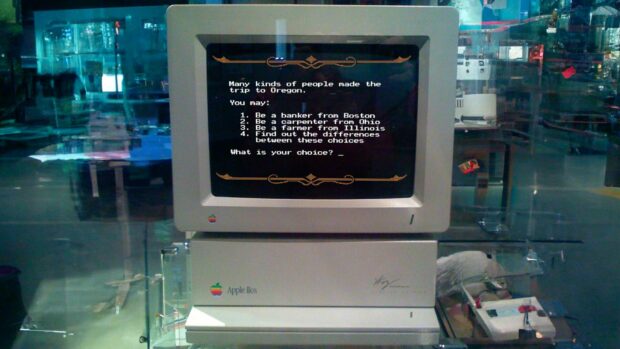
Naming The Members Of Your Oregon Trail Party After Real People, Was Actually Very Morbid
Naming the members of your party in The Oregon Trail game was part of the fun. I would frequently use members of popular 1980s bands like The Ramones, Motley Crue, and Guns N’ Roses.

But most kids named the people in their Oregon Trail party after friends and family. In my school, Oregon Trail parties usually consisted of names of popular students, friends, and family members. However, if you think about it, naming your party after your real-life friends and family was actually very morbid. Why? Because it was absolutely certain that at least some of the people you trekked the trail with would perish during the journey.
Seeing your mom’s name on a virtual headstone half-way through the game was probably a jarring experience. But it may have actually been a powerful wake-up call for our small adolescent brains. The sheer randomness of the injuries and losses that you could experience in the game was based on reality. Sometimes the people you love will just get hurt or sick, and maybe die. That’s just part of life.
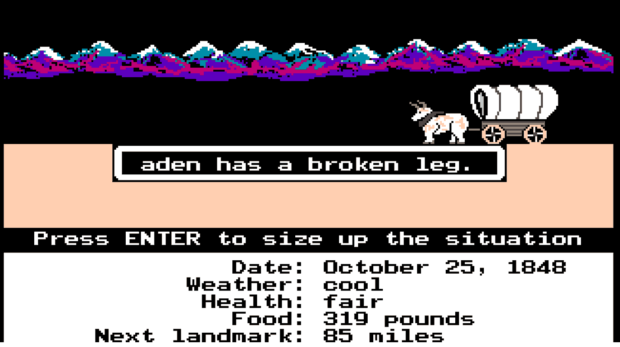
In other words, all those random broken arms, broken wagon wheels, and illnesses were really preparing you for your grown-up existence. It’s probably a good thing you didn’t know it at the time so that you could still enjoy your blissfully unaware childhood. “How’s it going, how was the weekend?” “Well, Annette got dysentery.” “Yikes!”
And if you named your party after people you didn’t like, well, you were downright diabolical.
Things You'll Notice If You Play The Oregon Trail Game As An Adult #OregonTrail #OregonTrailGame #Retrogaming Share on XThe Oregon Trail Wasn’t A Real Road
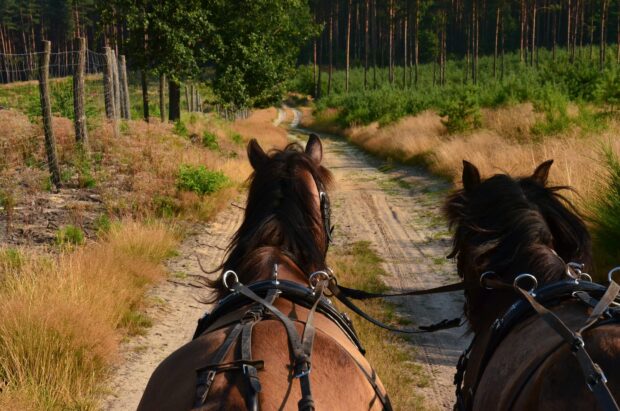
When you played The Orgon Trail game as a kid, you probably assumed that the trail was a highway-like road. It wasn’t. The Oregon Trail was a “wagon road” stretching 2,170 miles from Missouri to Oregon’s Willamette Valley.
The Trail was not a road in the modern sense, but rather a path worn down by the wheels of thousands of wagons over the years. The trail was often muddy, dusty, or rocky, and it could be difficult to follow. There were also many obstacles in the way, such as rivers, mountains, and forests.
The Game Glorifies Guns
The original Oregon Trail game was designed to teach grade school children about the realities of 19th-century pioneer life. But for many kids, it was just an excuse to shoot a shotgun at a bunch of delicious wildlife instead of taking another typing test.
Several kids at my school just treated The Oregon Trail video game as a hunting simulator. They would only buy ammo at Matt’s General Store in Independence, Missouri and just hunt until their party died. They had no intention of coming close to reaching the finish line. They just wanted to shoot stuff.
Besides the classic version of The Oregon Trail, what other video game would let you kill a bunch of wildlife with a shotgun at school? Share on XThe Origional Oregon Trail Game Promoted Wasteful Hunting Practices
No matter how much food you bought from the General Store at the beginning of the game, you were almost guaranteed to run out of meat munchies somewhere around the midpoint. The good news was you could go hunting in a fun mini-game, but there was a catch. No matter how much you hunted, the game would only let you carry a limited amount of meat back to your cholera-ridden, accident-prone family. The original version of the Orgeon Trail game only allowed you to carry 100 pounds back to your wagon. But other versions of the game, like the Macintosh version, allowed 200 pounds.
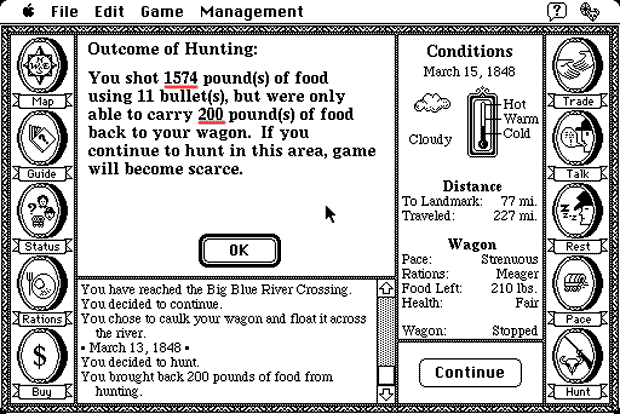
Smarter players wouldn’t waste their bullets overhunting or shooting at small game, like squirrels and rabbits. If you shot a large animal, like a bear or buffalo, in the game, then it was time to end your hunt and continue on the trail. You only needed to use one bullet to have a successful hunt.
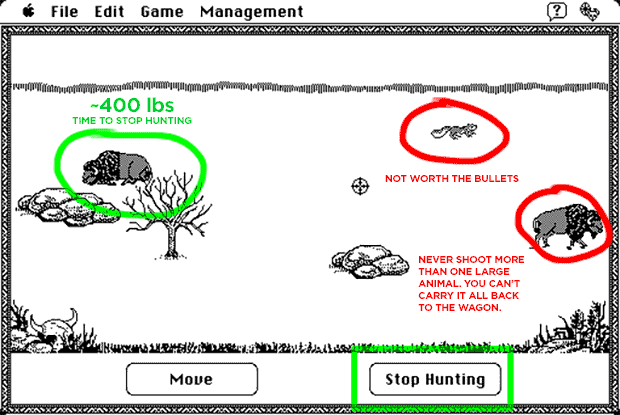
So, why did the game let you keep executing animals? That seems like a poor lesson to teach kids about creating waste, right? Well, it’s actually an accurate depiction of what happened as the Pioneers stampeded their way across Native American lands.
Unlike today, wildlife used to be extremely plentiful in North America in the 1800s. But starting with the Pioneers, wasteful hunting practices reduced animal populations across the continent. So, when your 10-year-old self was gleefully shooting everything that came in range, you were reenacting what your terrible ancestors once did to real animals.
The Land Determined How Successful Your Hunt Would Be
Most kids hunting in the classic Oregon Trail video games were just focused on how many animals they could shoot during their hunts. But there was a strategy for smart hunting that you may not have noticed as a kid. Instead of shooting up whatever wilderness you happened across, you could have easily maximized your hunting trips and saved bullets. More importantly, you could’ve saved precious time that would help you beat the deadly snowstorms later in the game.
The secret was where you were hunting. The amount and types of animals in the hunting mini-game were based on the terrain. If you waited for a lush prairie to start spraying bullets, you’d probably get a buffalo or bear. But if you hit the desert, you’d just waste bullets trying to shoot a small rabbit or squirrel.
This Oregon Trail hunting trick wasn’t exactly a secret. It’s common sense. IRL there are larger animals in areas where the environment is green and lush. It’s also clearly stated on page 3 of the official Oregon Trail manual:
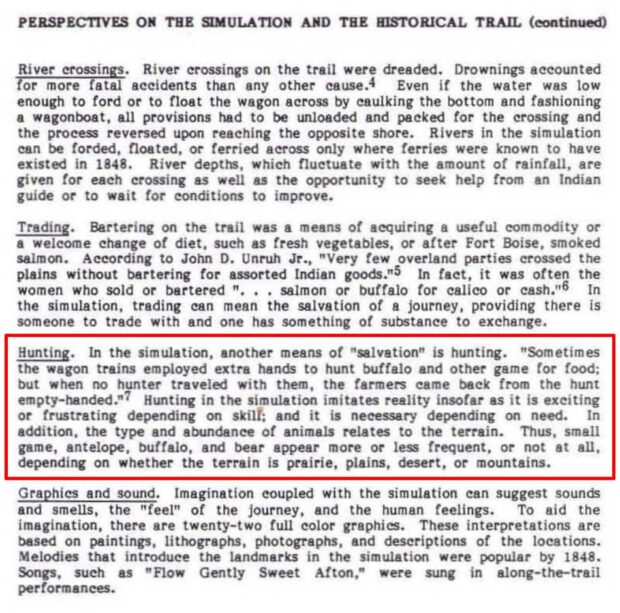
…the type and abundance of animals relates to the terrain. Thus, small game, antelope, buffalo, and bear appear more or less frequent, or not at all, depending on whether the terrain is prairie, plains, desert, or mountains.
Minnesota Educational Computing Corporation, October 1985
The Names Of The People You Met In The Oregon Trail Game Were Real People
Before you ever got the chance to pollute the game’s high score list with curse words, there was an original list filled with vaguely old-timey names who were — surprise, surprise — actual real people from history.
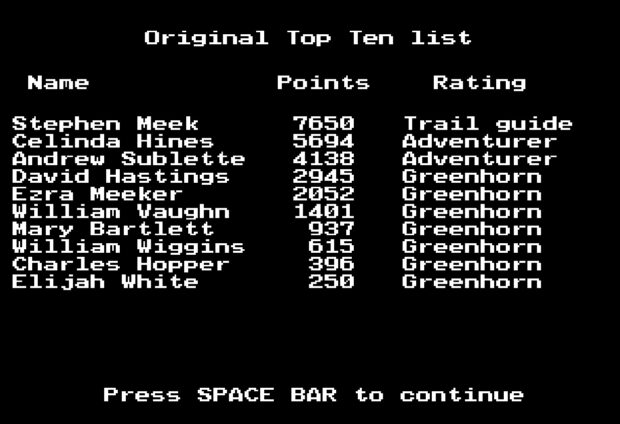
At the top of the Oregon Trail high score list was Stephen Meek, a fur trapper known for helping Pioneers navigate the unimaginatively-named Meek Cutoff. Another was Ezra Meeker, who traveled the trail twice and was instrumental in preserving it, later founding the Oregon Trail Monument Association.
The travelers you met along the way, too, were named after real historic figures. One of the names that pops up a few times is Marnie Stewart, who traveled the trail in the 1860s.
Alonzo Delano also offers some advice to players. In 1854, he wrote a book titled “Life on the Plains and Among the Diggings.” The book discusses his experiences during on the Oregon Trail and the California Gold Rush.
The people in the game definitely knew what they were talking about, even if you weren’t paying attention. This might make you feel bad for replacing their names with immature gibberish (i.e. Captian Farty Pants), but then again, you were probably in second grade.
Life Was Easier For Rich People Traveling West
At the beginning of the game, you get to choose an occupation for your character. The options in the classic version of The Oregon Trail are farmer, carpenter, and banker. There are pros and cons to each profession, but if you choose a banker, you get the most money and can buy tons of supplies before you start your journey.
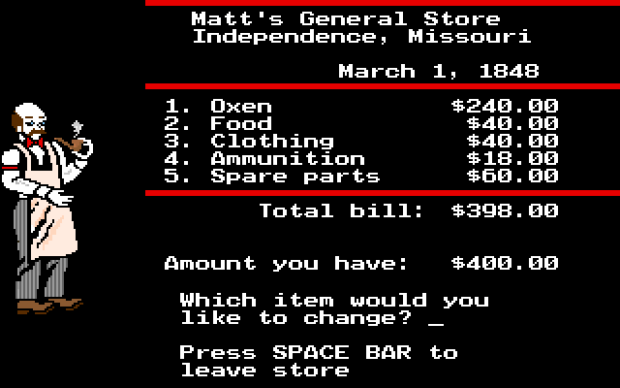
Was The Oregon Trail indirectly teaching kids that life is easier for rich people? How many kids walked away from the game wanting to be bankers instead of farmers? Or thinking about white collar jobs instead of blue collar?
Getting A High Score In The Oregon Trail Game Was Much Easier Than You Realized
I remember at the end of computer class, we would all marvel at the Oregon Trail high score screens. Whoever got the highest score earned admiration from their peers as we all walked down the hall for the next class. It was such a glorious, but temporary victory. Because the games were loaded from a locked diskette, and as soon as the teachers power down the computers, the scores were reset.
But looking back as an adult, it was a lot easier to get a high score in The Oregon Trail game than we realized.
- Occupation: Your occupation earned you the most points at the finish line. If you were a banker, you start the game with more money to buy supplies, but you finish the game with the lowest occupation points. But if you were a carpenter, you got double points, and if you were a farmer, you got triple points! That’s because the West didn’t need more bankers, but it did need people with practical skills, like farming.
- Health Of Party Members: The second-biggest opportunity to earn points was party health. You got points for how many people in your party survived, and how healthy they were at the end of the game. Being in good health was worth a lot more points than being sick. Instead of rushing to the end of the trail, it was smarter to travel at a steady pace and ensure your wagon was stocked with medicine. Stopping to rest just before crossing the finish line was also an easy way to increase health and points before the end of the game.
- Extra Inventory: You got points for each inventory item that was still in your cart when you finished the game. Loading up on supplies at Fort Boise and every opportunity after that could help you earn extra points.
So next time you play Oregon Trail, don’t just pick the banker because it’s the easiest. Be a farmer, travel at a steady pace, pack lots of medicine, and stock up on supplies, so you finish the game with a full cart.
The Game Is Fully Of Somber Stories From Native Americans
Hollywood has a long history of negatively depicting Native Americans. Countless American movies and TV shows tried to justify the violence and oppression that Native Americans faced at the hands of foreign settlers. For example, movies like The Searchers (1956), Red River (1948), Little Big Man (1970), and Unforgiven (1992), all include depictions of Native Americans as either being bloodthirsty savages, or lazy, drunk, and superstitious people.
But The Oregon Trail tried to tell a more somber story. Every so often, you’ll talk to a Native American when you’re on the trail, and the things they’d say were often heartbreaking. One Arapaho says, “When the white man first crossed our lands, their wagons were few. Now they crowd the trail in great numbers. The land is overgrazed with their many animals. Do any white men still live in the East? My people talk of moving.”
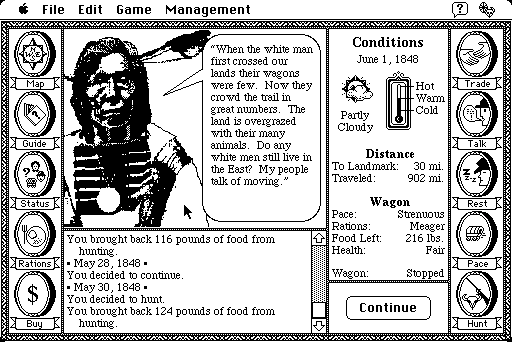
The Oregon Trail is remembered fondly by settlers, but not Native Americans. They see the trail as a path of destruction that let intruders take their land and exploit their resources. Throughout the game, Native American characters talk about the destruction that the Pioneer wagon trains brought with them. That’s pretty heartbreaking stuff, but hey, at least a video game got their history right when Hollywood couldn’t.
Newer versions of The Oregon Trail game included perspectives of Native Americans whose home was what pioneers saw as an unexplored frontier. The game opens with a message from the developers acknowledging that earlier versions failed to depict Native American perspectives and cultures. The new version tries to represent the lives of Native Americans more accurately.
How To Play Oregon Trail Today
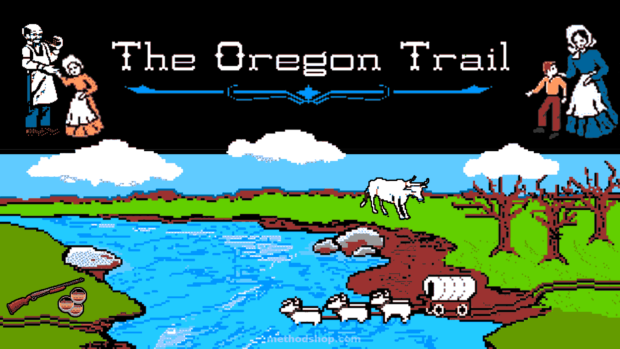
From the heartbreaking stories of Native Americans to the glorification of wasteful hunting practices, the original version of The Oregon Trail game hasn’t aged very well. It’s good to see that developers have updated the game while maintaining its original spirit.
If you haven’t played The Oregon Trail yet, then you are in for a retrogaming treat. You can play The Oregon Trail unblocked game version here using your web browser. There’s also an official and updated version of the game in the Apple iOS and Google Play stores.
- Oregon Trail – Macintosh Version (original version, 1991)
- Oregon Trail Game – MS-DOS Version (original version, 1990)
- Oregon Trail – iOS (updated modern version, 2021)

Frank Wilson is a retired teacher with over 30 years of combined experience in the education, small business technology, and real estate business. He now blogs as a hobby and spends most days tinkering with old computers. Wilson is passionate about tech, enjoys fishing, and loves drinking beer.




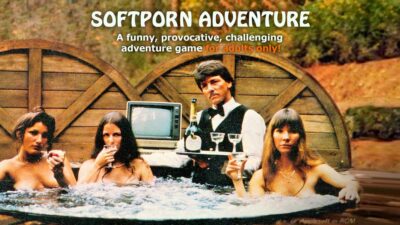












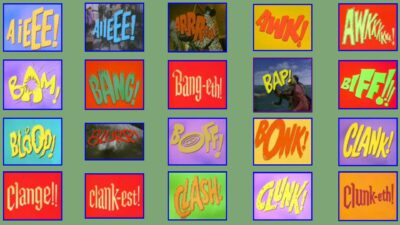






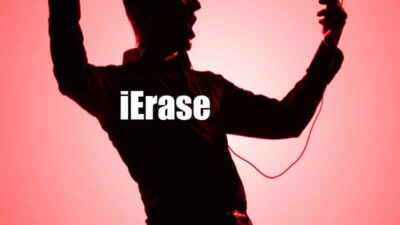
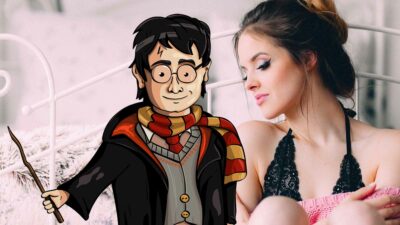
 16 Fascinating Facts About Goats!
16 Fascinating Facts About Goats!
Leave a Reply
You must be logged in to post a comment.